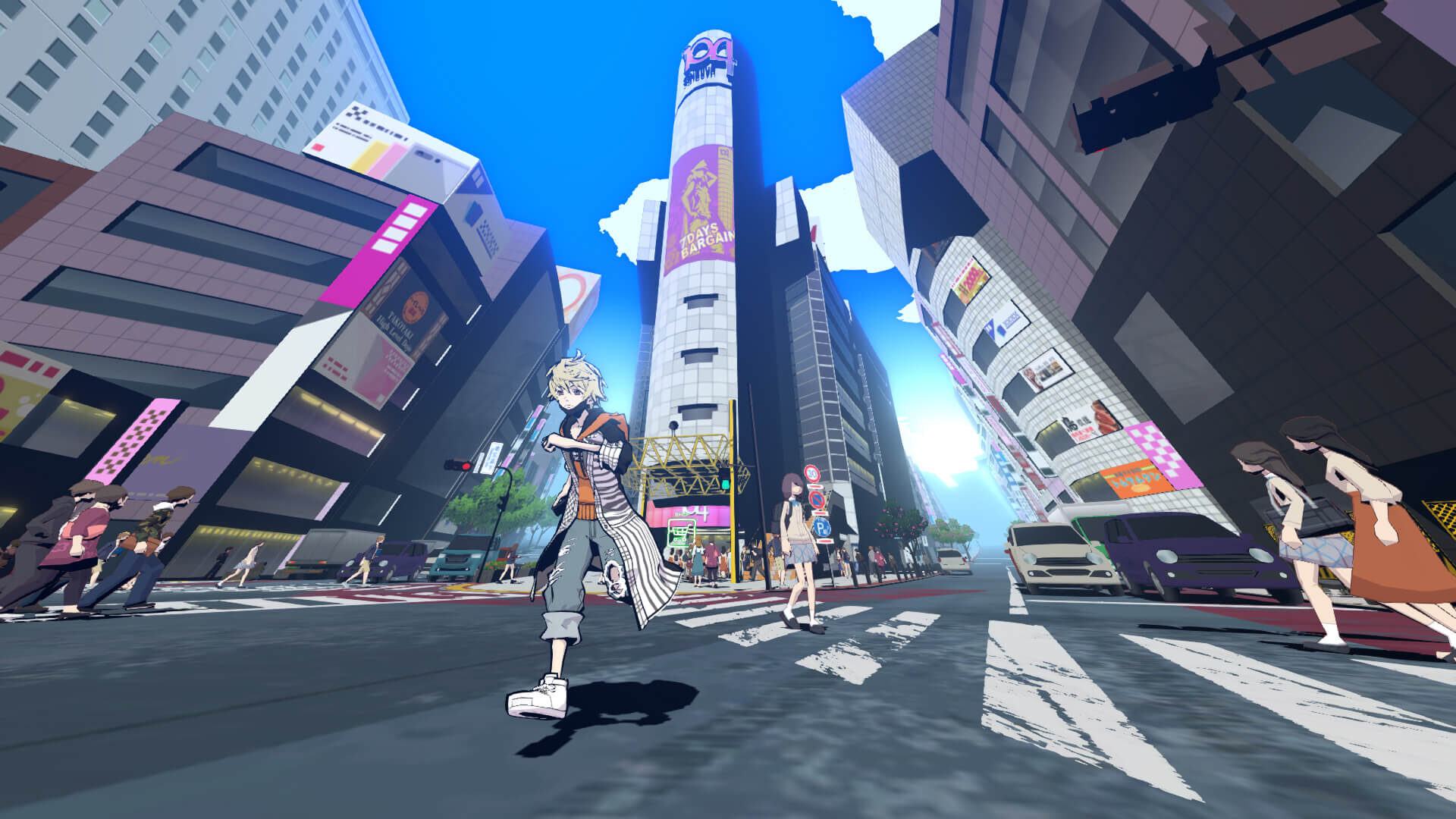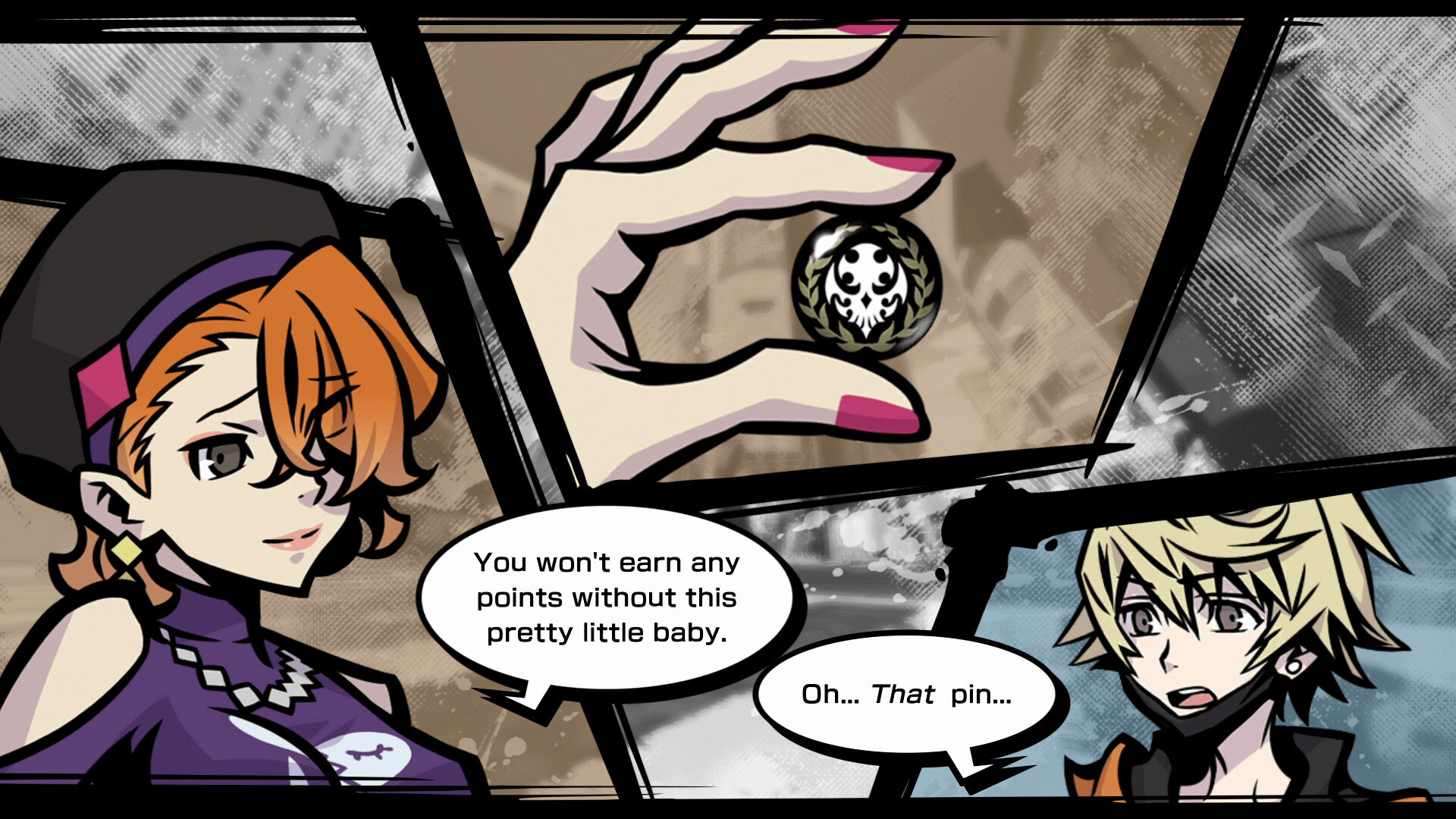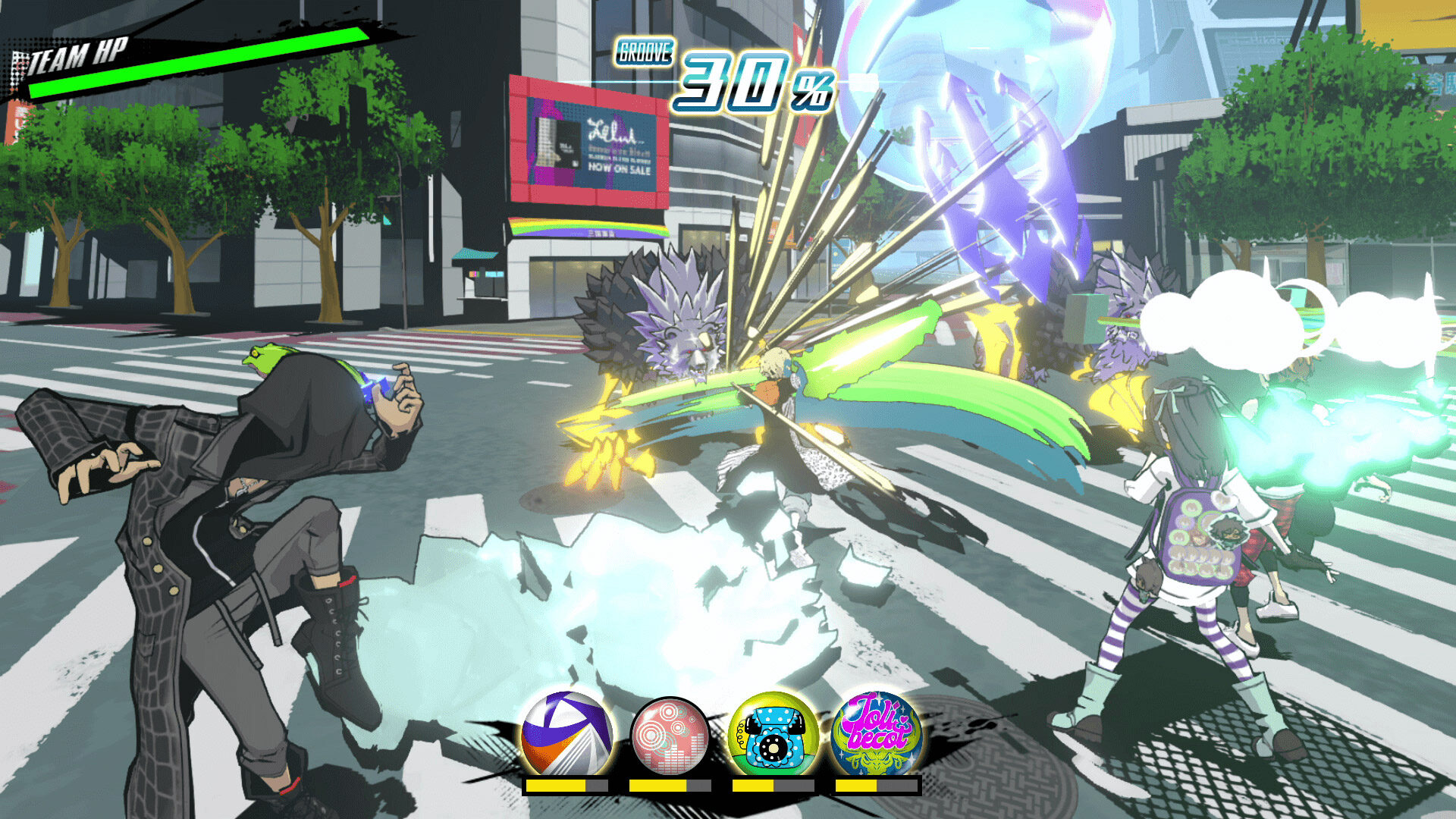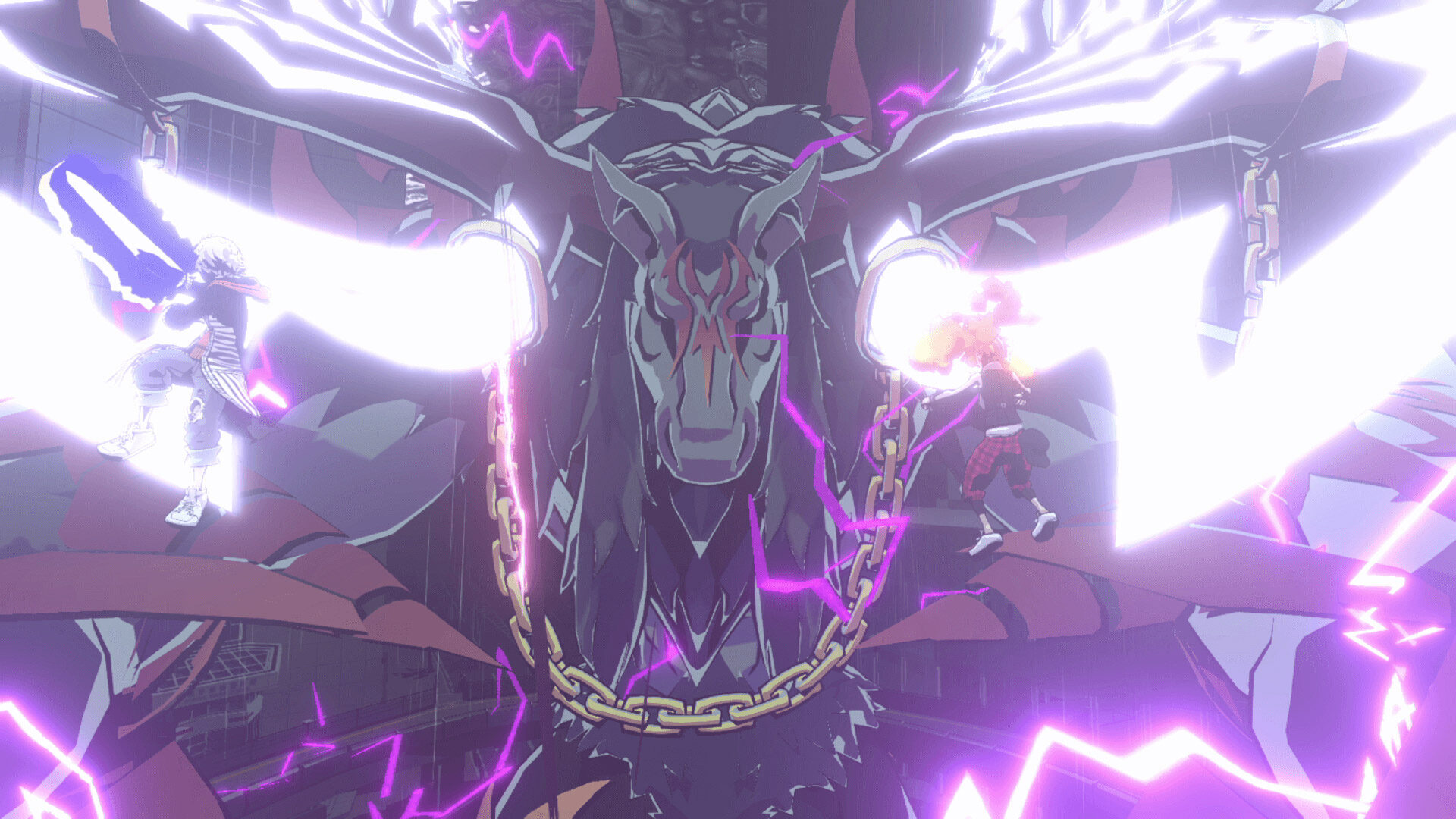For a select group of players, Neo: The World Ends with You will act as the culmination of a fourteen-year journey that included a Nintendo DS game, a smartphone port, a Switch remaster, and 10 anime episodes. Those players will probably have a lot of expectations going into this reboot-slash-sequel, hoping to see how their favorite characters have gotten on in the last decade-plus and reticent for how the gameplay of the original, as well as its setting of Shibuya, will translate to three dimensions.
I am not one of those players.
Before starting Neo: The World Ends with You, I didn’t even know where Shibuya was, or if it was even a real place. But the passion for what I know now is one of Tokyo’s liveliest and most exciting neighborhoods, along with its youth culture, was so apparent and infectious that I ended up reading articles and watching videos about it alongside my playthrough.
The same can be said for the fantastical and complex world of the Underground that the series presents. As a new player, I had no idea what The World Ends with You was about besides vague notions of there being a “Game” and some kind of afterlife. Now, I feel fully immersed in the world of Reapers, Players, Angels, and Composers.
Neo sort of picks up where the last game ended, in that—from what I can gather by reading about the original—it carries over a lot of familiar elements from the previous game. However, instead of Neku, Beat, and the rest of the cast from the 2007 game, Neo introduces a whole new batch of players in Rindo, Fret, and Nagi. These characters find themselves, against their will, playing The Game—a test of might and skill against manifestations of emotions called Noise. Trying to outscore the other teams that are also playing The Game is crucial, because the last-place team at the end of every week is “erased from existence.” The only catch is that this Game takes place in a parallel version of Shibuya called the Underground, which is populated by the dead. If you’re in the Underground, you’re already dead, but earn enough points and win The Game, and you can wish yourself back into the RG, or the land of the living.

Pretty simple, right? Yeah, well, that’s just the start. Neo’s story takes some pretty wild twists and turns, bringing back old faces and introducing new ones along the way—and new players might find all of the callbacks and references a bit overwhelming. Thankfully, just reading up on the last game’s plot and characters helped me contextualize some of what I might have missed, and Neo’s new cast kept me going with their infectious personalities, especially when it comes to the Wicked Twisters, the team of Players that serve as the protagonists. Rindo struggles with being a leader and indecisiveness, but his strong sense of duty and loyalty to his friends keeps him going. Fret seems happy-go-lucky on the surface, but he has a lot of regrets simmering just below. And Nagi is an asocial loner and an exceptional judge of character who has to learn to open up if she wants to survive the game. The cast of side characters—whether they’re other Players like Kanon and Motoi or Reapers like Shoka and Shiba, the Game Master—are all incredibly colorful and have their own secrets to discover, too.
As for the journey these characters go on, Neo seems pretty straightforward at first, but it eventually ends up tying in a ton of lore from the original that might lose players who don’t at least brush up on the previous game and its “remixes.” There were many times throughout my playthrough when I thought the story was drawing to its conclusion, only to have a new character interrupt with yet another complication. There’s a lot of stopping and going, partly thanks to Rindo’s “Psych” ability to turn back time and correct past mistakes. You don’t have a ton of control over when and where you can time travel, which is probably the right move if the writers wanted to keep the narrative cohesive. But, on the other hand, the story does have you revisiting moments and plot beats several times over so that Rindo can fix the past and change the Wicked Twisters’ destiny. With all of these plot twists and repeats, Neo’s story can drag at times, but its ultimate conclusion makes it worth your time and helps smooth over some of the narrative’s rougher patches.
The way the story is told is partly what makes it so effective. Retaining the original’s comics-style framework, the writing and art bring the motionless characters to life more than most fully rendered cutscenes in other games. During more momentous story beats, these comics even have voice overs, and all of the actors do fine work, with a couple of exceptions. There are, too, a handful of fully animated cutscenes that, while not exactly dazzling, do a good job of translating the game’s tone and characters onto a more fully fleshed out stage. But even if the game’s storytellers hadn’t included these moments, I don’t think I’d feel like I was missing anything.

Still, while you’ll spend a lot of time in Neo reading word bubbles and unraveling the story, you’ll spend even more exploring the game’s fully 3D version of Shibuya and engaging with its overhauled combat system.
I imagine that fans of the original will feel slightly conflicted about the game’s translation to a 3D environment, considering TWEWY’s hand-drawn art style was probably part of the appeal. But those players will probably also have fun seeing how the original’s version of Shibuya comes to life when it’s given three dimensions. Structurally, Neo is basically a one-for-one remake of the original—walk around, visit shops, buy pins, and scan when you need to fight some noise or read people’s thoughts.
For newer players, Shibuya’s map might feel a little small compared to other “open-world” RPGs, but it’s chock full of personality and interesting side characters to meet. As someone who routinely expresses open-world burnout, I will say that Shibuya’s size is both a blessing and a curse. It felt great to once again experience a game world where I didn’t have to constantly reference a map to figure out where I wanted to go. The ease of navigation is partly due to the game’s informative UI, but the setting itself has so many distinct areas and landmarks that I never once felt lost, especially since the map is broken up into smaller individual zones.
On the other hand, by the time you roll credits, you’ll have walked up and down every inch of Shibuya more times than you can count. There are certain areas that only open up later in the game, but for the most part, you’ll be visiting places like Tower Records and Scramble Crossing over and over and over again—and it can start to feel a little stale. Plus, the map is small, but there is a brief load time between zones, which makes traversing it just a touch more annoying than it needed to be. It seems silly to ask for a fast travel mechanic in such a small game world, but it would have definitely cut down on some needless walking. Still, that doesn’t take away from the fact that the game’s version of Shibuya is so lovingly recreated that it starts to feel like it’s as much your home as it is Rindo’s and Fret’s.
Where the shift into a fully 3D game really hits the spot is in the game’s reworked combat system. Neo could have retained the original’s touchscreen controls with the Switch, as the Final Remix did, but based on reviews I’ve seen, I’m really glad it didn’t. Instead of equipping multiple pins (or, essentially, types of attacks) to Rindo, you’ll assign one pin to each character on your team, maxing out at six characters by the end of the game. Each pin has a button assigned to it, with different methods of input, whether it’s rapidly tapping that button, holding it down for a sustained attack, or charging it up. Press that button and you’ll have that character attack, giving the game a sense of real-time strategy on top of its action-RPG core.
Part of what makes Neo’s combat so much fun is figuring out your preferred lineup of pins and how you can best employ them in combat. Sure, you can send out all your attacks at once, but then you have to wait for them all to cooldown. Discovering an order and rhythm to your attack strategy and executing it properly is utterly satisfying, no matter how many battles you fight.

This also becomes incredibly important when you’re engaging the game’s Groove system. Each pin has a way to trigger a “beatdrop.” Follow up that beatdrop in time with another attack and you not only do more damage to the enemy with that attack, but you also gradually fill up your Groove meter. Once your Groove meter hits 100 percent, you can unleash a special attack that will do a ton of damage and possibly save you from a bad situation. And you’ll want to finish fights as quickly and cleanly as possible, because doing so will earn you more and better pins.
The other aspect of Neo’s combat system that I really respect is its attitude towards difficulty settings. At any time, you can lower your level, meaning you’ll have less health in a fight but gain a higher chance of enemies dropping pins when you defeat them. Likewise, you can unlock higher difficulty levels that will let you earn rare pins. But you can also play at your highest player level on Easy and still have fun engaging with the combat and its Groove system. It’s entirely up to you as the player, and there’s nothing in the game that hints at there being a “right way” to experience it vis-à-vis difficulty settings. It just depends on what you’re looking for.
The one problem with Neo’s otherwise great combat is that it’s sometimes very easy to lose sight of the enemy. Thankfully, there is a lock-on system that doesn’t require you to hold a button, and you can switch between targets with the flick of the right stick. Even still, there are moments when there are so many attacks flying around and visual effects splashing on the screen that it can be difficult to know when an enemy is attacking. This issue very rarely led to my death or hampered my enjoyment, but it can happen, and it’s worth noting.
I have no idea how longtime players will feel about all these changes to the original’s formula. What I can say is that, as a new player, RPGs rarely engage me in the way that Neo: The World Ends with You did. It might have a few repetitive moments, but by the time I finished it, I completely understood why the original became a cult classic. Now I can join the rest of the series’ fans and pray to the Game Master that I don’t have to wait another 14 years for my next trip to the Underground.

Images: Square Enix
|
★★★★★
Players coming in fresh to Neo: The World Ends with You might have a 14-year history to contend with, but that won’t stop them from falling in love with Shibuya. Whether it’s the complex and likable characters, the wickedly twisting storyline, or the frenetic yet strategic combat system, the long-awaited sequel has a lot to offer fans of action RPGs and the cult-classic series alike. Whether it was worth the wait depends on how long you’ve been waiting, but newcomers shouldn’t shy away from this fantastic game. |
Developer Square Enix, h.a.n.d. Inc. Publisher Square Enix ESRB T - Teen Release Date 07.26.21 |
| Neo: The World Ends with You is available on Nintendo Switch and PlayStation 4. Primary version played was for Switch. Product was provided by Square Enix for the benefit of this coverage. EGM reviews on a scale of one to five stars. | |

Michael Goroff has written and edited for EGM since 2017. You can follow him on Twitter @gogogoroff.